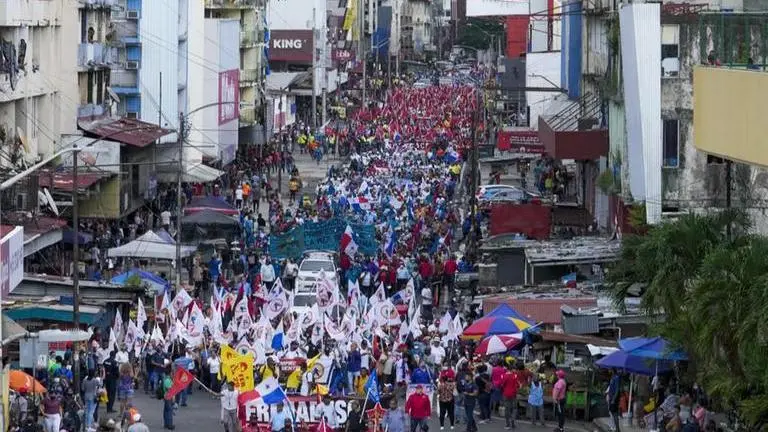Updated 14 July 2022 at 11:15 IST
Anger over inflation sparks protests in Panama
As protests continue, more groups from the public health and education sectors among others emerged with demands, ranging from better working conditions in hospitals to more medical equipment and better salaries.
- World News
- 2 min read

Frustrated Panamanians have taken to the streets in protest for more than a week, building upon anger over fuel prices that have nearly doubled to show their general dissatisfaction with the government.
The protests grew Wednesday despite President Laurentino Cortizo ordering Tuesday the control of prices of at least 10 products of the basic food basket and "austerity" measures in the government, in addition to the temporary freezing of fuel prices.
As protests continue, more groups from the public health and education sectors among others emerged with demands, ranging from better working conditions in hospitals to more medical equipment and better salaries.
Social discontent also targeted corruption scandals, waste in state coffers, subsidies to businessmen and the nation's historic inequality, according to experts.
Advertisement
"This government has been characterized by its anti-democracy, its anti-popularity and above all, an absolutely unpatriotic behaviour," said Miguel Antonio Bernal, political science professor at the University of Panama. "The people have come out to say enough is enough."
Protesters questioned the government for not putting price controls on products they consider vital for basic nutrition, such as eggs, vegetables, and bread in general.
Advertisement
Late in the afternoon, riot police fired tear gas at groups trying to break through a fence guarding the National Assembly building and took some of the detainees away.
Panama, a country of 4 million people, has historically maintained a fairly stable service-based economy that uses the U.S. dollar as its official currency.
That has practically made inflation a non-issue in recent times. Now economists put inflation around 4%, which is significant but well below some other countries in the region, such as Mexico, where it is around 8%.
Published By : Associated Press Television News
Published On: 14 July 2022 at 11:15 IST
